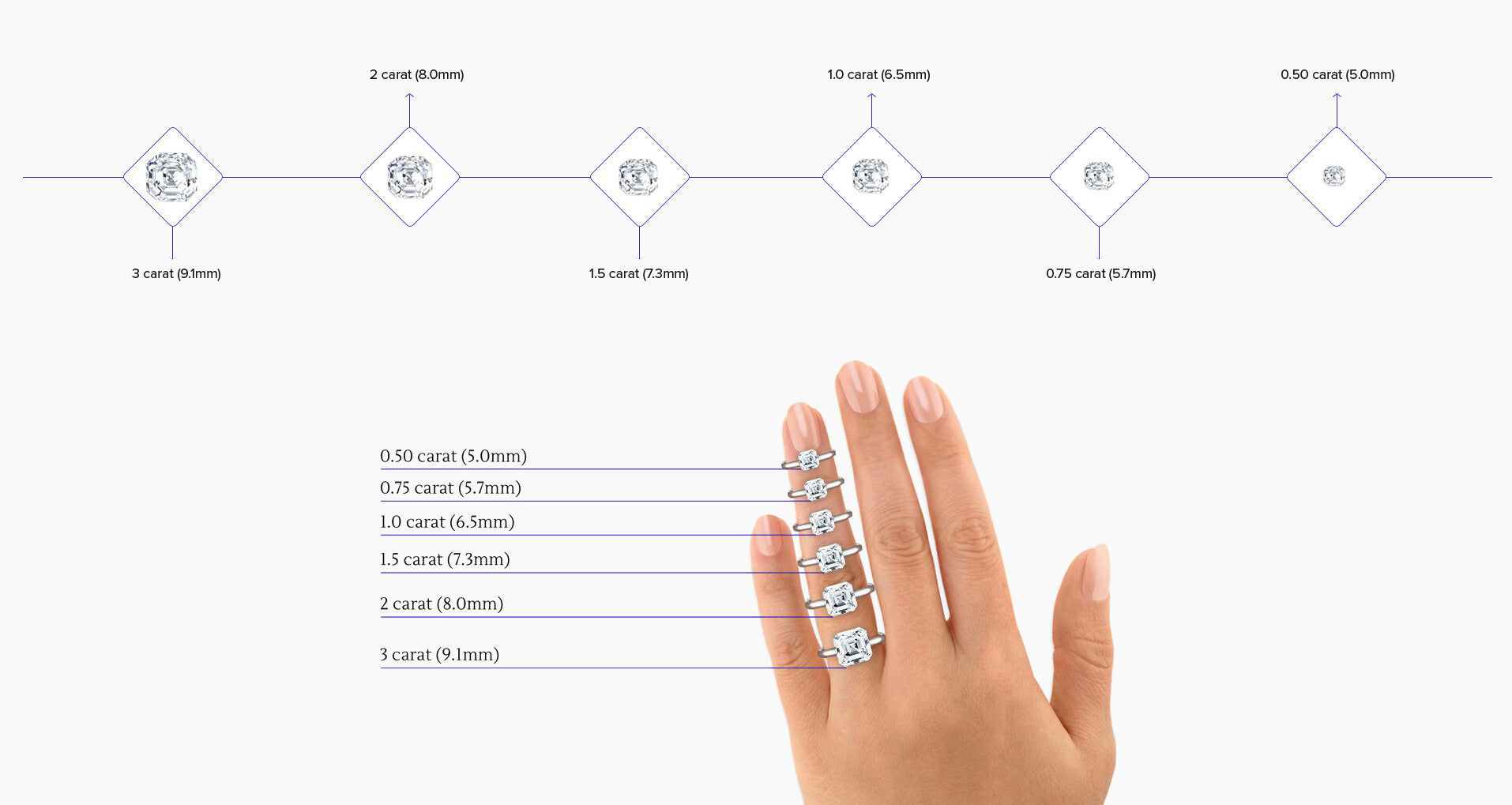
Joseph Asscher was the original rock star. King Edward entrusted him with the largest gem- quality diamond ever discovered: the 3,106-carat Cullinan diamond, which he cut into more than 100 gems, including the 530.20-carat Great Star of Africa in the British Crown Jewels. After breaking the blade of a specially designed knife on his first attempt, legend has it that Asscher fainted when he managed to cleave the Cullinan in two on his second try.
Although most people think of the Asscher as a variation of the emerald cut, you could argue that the Asscher came first. The earliest faceted diamond shapes, the table cut, was square, not rectangular. Step cuts are older than brilliant cuts because they required less precision. These early diamond step cuts were refined over the centuries.
Asscher secured a patent for his innovative step-cut square in 1902. The cut became particularly popular during the Art Deco period. The 33.19-carat Elizabeth Taylor Diamond is a stunning example of an early Asscher cut diamond.


Because Asscher cut diamonds are much less common than round brilliants, many retailers won’t have any in stock. You are much better off buying fancy shapes like this online because you’ll have a much better selection in your target color, clarity and carat weight so you can assess the shape and cut quality and pick a really beautiful diamond that’s a good value too.
You’ll be able to select a better Asscher cut diamond if you buy it loose rather than already set into an engagement ring.
It’s important to rely only on diamond grading reports from GIA or AGS, the world’s most respected diamond grading laboratories. You can’t rely on the grades from other labs to be equivalent.
Although the original patent on the Asscher cut expired long ago, Joseph’s descendants at the Royal Asscher Company of Amsterdam have patented and trademarked a new Royal Asscher cut, which has 74 facets.



Compared to the four-sided princess cut diamond, all three of these cut corner shapes will be more durable and less likely to chip.
Like a square box of mirrors, the Asscher cut is dazzling, with a jazzy Art Deco flair. The best part of the cut is its distinctive “windmill” pattern, triangles that taper from the corners and meet in the center, flashing with brilliance and fire.
It’s a different optical effect than the smaller but more numerous reflections in a brilliant cut. The facets reflect each other across the pavilion of the stone. When you turn the diamond, you’ll see the entire gem flash with light. A well-proportioned Asscher cut diamond
is undeniably stunning.

Our customer’s favorite setting for an Asscher cut engagement ring is a refined Asscher cut solitaire with a diamond band. For something a bit more intricate, an Asscher cut halo engagement ring has extra detail (and extra diamonds.). Because this cut is sleek and minimal, many brides also choose a simple solitaire: a bezel-set Asscher cut engagement ring is particularly sleek. Three stone styles are also popular, especially an Asscher cut engagement ring with tapered baguettes on each side.

We programmed ROSI, an artificial intelligence powered by IBM’s Watson, to comb through all the square emerald cut diamonds available on the market to find the best balance of quality and value for your budget. See the best square emerald cut diamond for your budget.
ROSI generally recommends a color of H for an Asscher cut diamond: the flashing facets will still look almost colorless. Clarity should be at least VS2 (or better whenever possible.) ROSI recommends a ratio of 1.00 to 1.05 to keep the square silhouette.
The table of an Asscher cut is like a window into the center of the diamond. Any inclusions there will be easy to see. For this reason, you will want to make sure you choose an Asscher cut diamond without a large inclusion in the center that will be reflected around the stone.
But since Asscher cut diamonds are less expensive per carat than round brilliants, you can afford to upgrade your quality.

Unlike round brilliants, GIA does not offer cut grades for Asscher cuts. The grades you see on the report are for polish and symmetry, not for proportions. Still the grades for polish and symmetry can give you an indication of how the quality of the cutting. AGS does issue cut grades for Asscher cuts.
Make sure you buy your loose Asscher cut diamond from a company that demonstrates a commitment to responsible sourcing. Supporting the Kimberley Process is a great start but the best suppliers go beyond that, sourcing diamonds directly from sightholders and mines.
